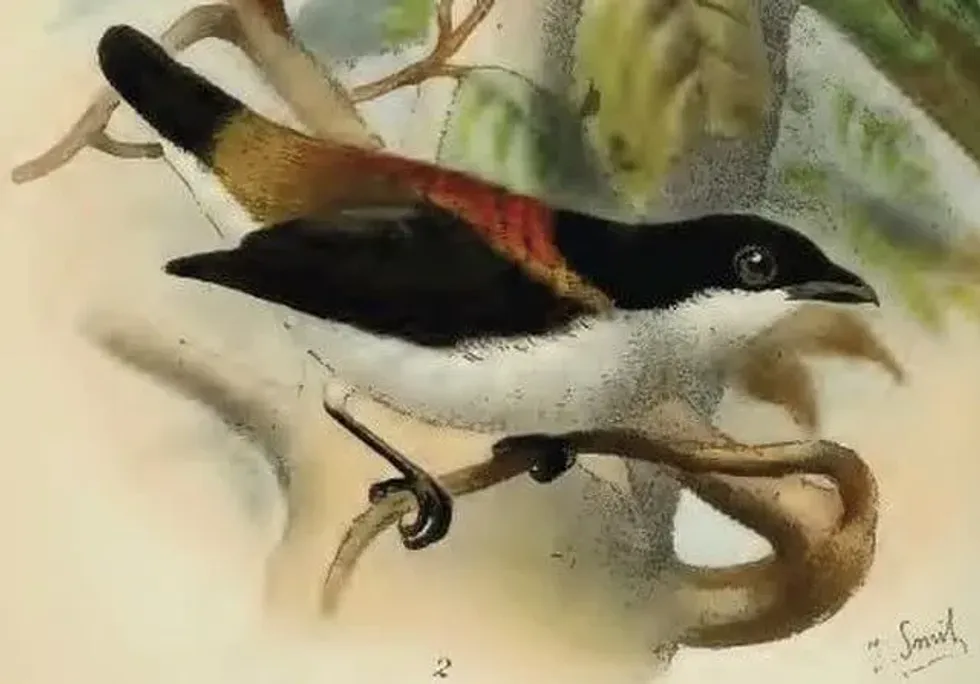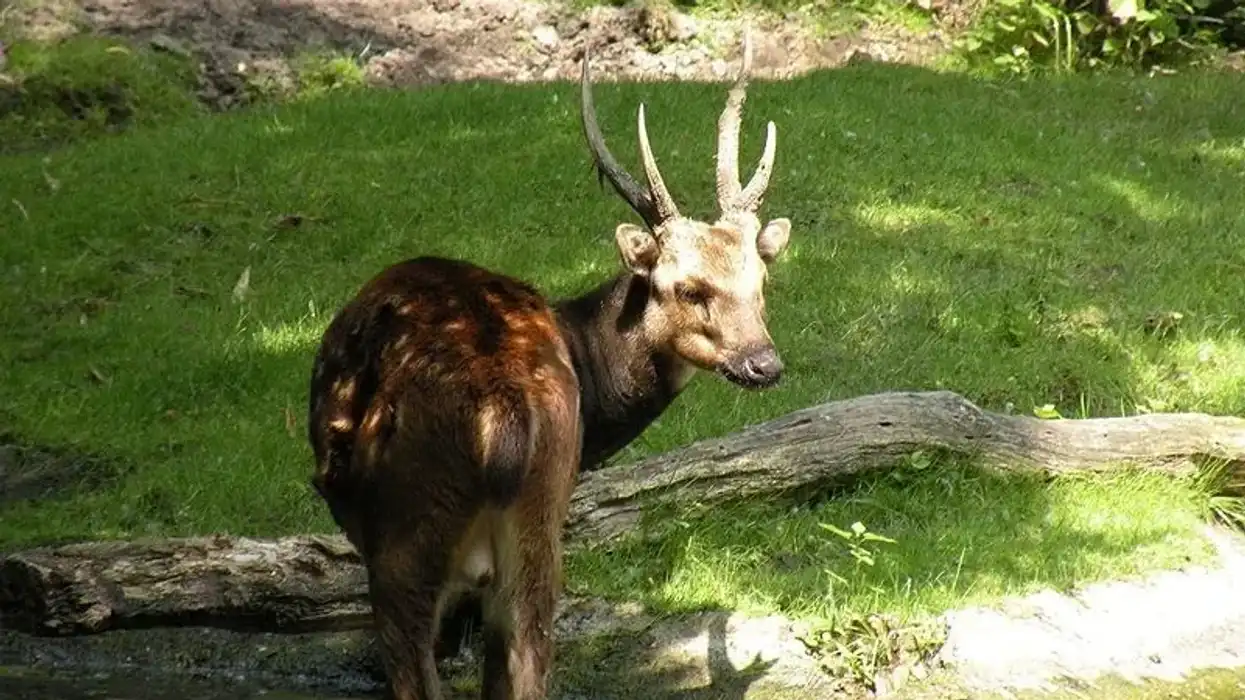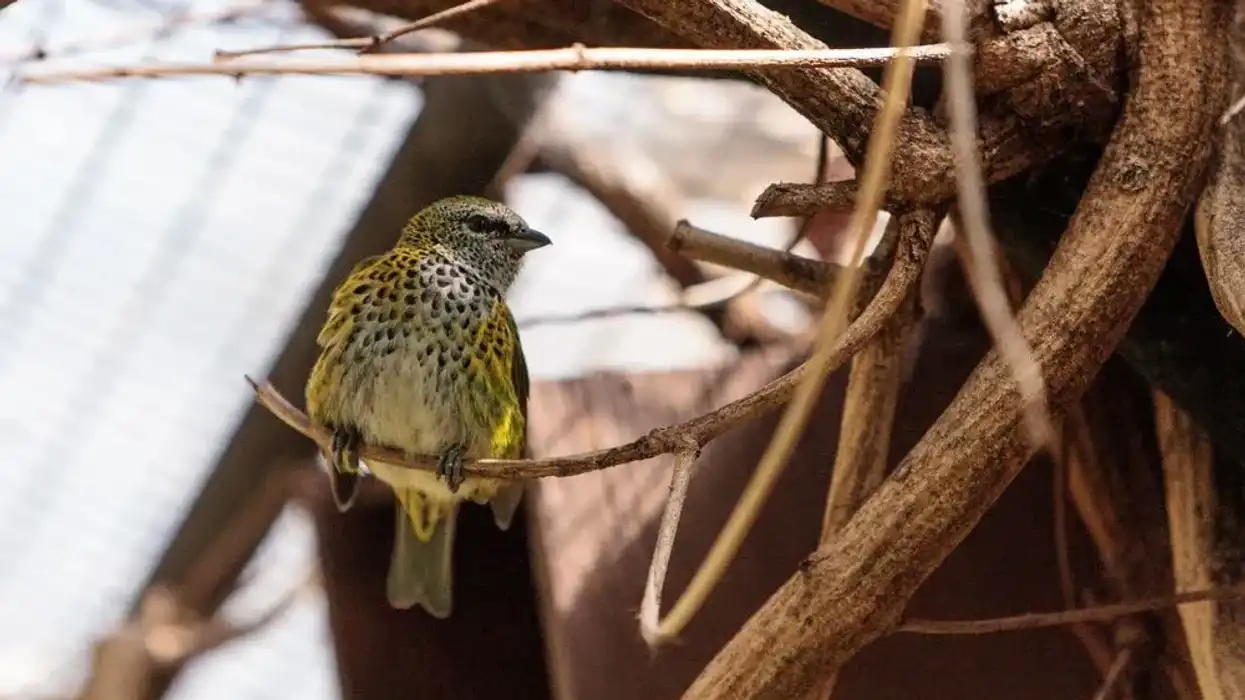The Cebu flowerpecker (Dicaeum quadricolor) is a species of bird that is part of the flowerpecker family and is among one of the 45-50 species of flowerpeckers that can be found on the Asian subcontinent. The Cebu flowerpecker is usually native to the Cebu island, but it can also be found in the Nug-As forest and the Tabunan forest.
Cebu flowerpeckers have gone through a worrying population decline ever since they have been recorded. These species were considered to be extinct until its rediscovery in the year 1992.
Ever since then, the conservation of the bird has been of utmost importance as there are an estimated 50-100 breeding individuals that can be found in the wild with the numbers still decreasing as each day passes.
Conservation efforts and educating locals of the importance of these birds to the local ecosystem have somewhat helped in maintaining a stable population till now and there is hope among conservationists that these birds will come back from the brink of being critically endangered and once again be part of the flora and fauna of the Cebu island.
For more relatable content, check out these willet facts and canyon wren facts for kids.
Cebu Flowerpecker Interesting Facts
What type of animal is a Cebu flowerpecker?
The Cebu flowerpecker (Dicaeum quadricolor) is a critically endangered passerine bird that is endemic to the Island of Cebu located in the Philippines. The Cebu flowerpecker is one of the most threatened species of birds in the world and its current population is estimated to be in just a few hundred.
Some other types of birds are rusty blackbird, pitta bird, mountain bluebird and myna bird.
What class of animal does a Cebu flowerpecker belong to?
The Cebu flowerpecker belongs to the Aves class of animals. The Aves class consists solely of birds and belongs to the family of Ardeidae.
How many Cebu flowerpeckers are there in the world?
Currently, the population count of these critically endangered species is estimated to be around in the low 50-100 individuals in their native forests of the Philippines.
The Cebu flowerpecker is one of the most endangered and threatened birds of the world and have faced a massive decline in population in their native island of Cebu in the Philippines.
These species of birds have faced a massive loss of habitat in their native forests and there have been strict conservation efforts to bring these birds back from being critically endangered.
Many forests in Central Cebu have gone through a vast change in ecology due to human interference like deforestation for the expansion of infrastructure, and unchecked hunting by local villages in the Tabunan forest.
These deforestation efforts have severely affected the habitat of the Cebu flowerpecker as they had to move from one forest to another in search of a new habitat.
Another issue that caused their population decline is their having to compete with other endemic species in the forests and to try to adapt to this new ecology where they are no longer familiar with their food chain.
Other low-level threats that have threatened their population status are the introduction of invasive species, climate change, and mining.
Where does a Cebu flowerpecker live?
Cebu flowerpeckers live in the tropical and maritime forest regions that are found on the Cebu island. These birds thrive in relatively high temperatures, high humidity, and abundant rainfall parts of the forest.
What is a Cebu flowerpecker’s habitat?
Since their rediscovery in the Tabunan forests, this bird has been found at three other locations which include the nug-as forest in Alcoy on the Cebu island, the Babayungan forest in Dalaguete, and the Tabunan forest, all of which are regions of the Philippines.
These endangered species of birds are found in closed forest canopies with lots of fruiting and flowering plants. Most of these areas are usually located in the outskirts and interior ranges of their forest habitat.
Cebu flowerpeckers have made their nest in the tallest remaining trees in the native rainforest of the island of Cebu in the Philippines and are usually associated with Karst limestone soils. However, these species of birds frequent secondary logged areas that are next to large patches of native vegetation.
Who do Cebu flowerpeckers live with?
In the wild, the Cebu flowerpecker, much like most of the flowerpecker bird species, are solitary in nature and spend most of their lives alone. They do, however, come together during the mating season.
How long does a Cebu flowerpecker live?
Not much is known about the lifespan of the Cebu flowerpecker due to which it is difficult to state the lifespan of this bird species in the wild or in captivity.
How do they reproduce?
There is not much data on the reproductive pattern of the Cebu flowerpecker. However, there are some records that suggest these birds are territorial during mating season and often chase away other birds from their territory. Both sexes are involved in building nests and feeding the young.
What is their conservation status?
Since this species is listed as a critically endangered species on the IUCN Red List, they are under strict protection and conservation efforts by the Birdlife International org and the Cebu Biodiversity Conservation Foundation (CBCF) among many other groups that help in keeping the population of these endangered and threatened species at a stable number and help them in being a part of the native world ecology.
As of now, the habitat of the Cebu flowerpecker has seen a massive decline and there are only 1000 hectares of land where they occur naturally.
Conservation efforts like habitat restoration, biodiversity management, Biodiversity Conservation Awareness programs, and strict rules and regulation on the entry of the natives into the habitat range of flowerpeckers are just some of the forms of protection that is exercised to keep the population stable.
There are also a number of Critical habitat regions like the Tabunan forest in the Central Cebu National Park that are dedicated solely to Cebu flowerpeckers. Efforts from conservationists to raise awareness and educate local villagers are also in place which will hopefully put an end to locals raiding this bird's habitat and disturbing them.
Cebu Flowerpecker Fun facts
What do Cebu flowerpeckers look like?
The Cebu flowerpecker species are extremely colorful birds and have an erratic flight pattern. These birds are sexually dimorphic in nature, meaning males and females have different physical appearances. Males are much more colorful in comparison to females.
Male Cebu flowerpeckers have a large, triangular, scarlet to vermillion coat stain. The back, neck, sides of the neck, head, wings, and tails of the males are glossy blue-black with a pale yellow underside. The chin, armpits, under tail-coverts, and under wing-coverts are white with a blurred light olive edge.
Female Cebu flowerpeckers have a brown top, with a slightly faded olive head. The back, wing-coverts, and outer wing webs have a washed-out olive tone to them. The rump is entirely olive-yellow with a white underside that is accompanied by a faint gray olive-yellow chest and abdomen. The shoulders, inner webs, and the under wing-coverts are white.

*This is not a Cebu flowerpecker but a blood-breasted flowerpecker, of the same species. If you have an image of the Cebu flowerpecker, let us know at hello@kidad.com.
How cute are they?
Cebu flowerpeckers, with their multi-colored feathers and small size, are absolutely mesmerizing to look at! This bird is perhaps one of the most colorful bird species that can be found in Asian countries. Spotting a Cebu flowerpecker is a delight for any avid birdwatcher!
How do they communicate?
There are records of these birds making "tik tik" sounds, which can develop into a series of "trik-trik" notes that can be very high-pitched in nature.
How big is a Cebu flowerpecker?
The Cebu flowerpecker is a small species of bird and grows between 4.3-5 in (11-12.7 cm). In comparison, the largest flowerpecker species, the Tickell's Flowerpecker, grows up to 9 in (23 cm)!
How fast can a Cebu flowerpecker fly?
Unfortunately, there is no data stating how fast this species can fly.
How much does a Cebu flowerpecker weigh?
Due to a lack of data on the species, it is tough to state their exact weight. Since many of the flowerpecker species weigh between 0.1-2.8 oz (4-80 g), the Cebu flowerpecker will fall under this weight category.
What are the male and female names of the species?
There is no specific name assigned to either sex of this bird species.
What would you call a baby Cebu flowerpecker?
A baby Cebu flowerpecker, much like most bird babies, is called a chick.
A Cebu flowerpecker chick is born blind, naked, and helpless and depends on its parents for food and other sources of nutrition. The color shades of juveniles are similar to that of the female but are paler on top and have a pink lower mandible.
What do they eat?
Even though these birds are omnivorous in nature and eat plants, insects, and spiders, they practice more of a frugivorous lifestyle as their diet mostly consists of berries and flower nectars.
Are they predators?
No, these birds do not show predatory behavior and are usually docile in nature, and do not like to be in the presence of humans.
Would they make a good pet?
No, you cannot keep these bird species as pets as the Cebu flowerpecker is listed as a Critically Endangered species on the IUCN Red List and is part of the Birdlife International and Cebu Biodiversity Conservation programs that protect these forest birds on the Cebu island of the Philippines mostly by setting up protected spaces and breeding them in a relaxed conservation environment and slowly reintroducing them back into the forests of the Philippines.
Did you know...
In 2009, the Cebu flowerpecker species were nominated as the icon for biodiversity across the world due to them being listed on the IUCN Red List as a critically endangered species of birds.
The flowerpecker family has at least 48 species in total! They belong to the Order Passeriformes and are divided into two genera, the Prionochilus and Dicaeum, with the Cebu flowerpecker belonging to the Dicaeum genus.
The scientific name of the Cebu flowerpecker, Dicaeum quadricolor, refers to the four colors (blue, red, yellow, and white) of feathers that are on the body of the male.
How smart are Cebu flowerpeckers?
The Cebu flowerpecker shows a great amount of intelligence in its foraging behavior. Since these species are known to be bullied by other aggressive birds like the red-striped flowerpecker, they have changed their foraging hours and are only active between 9am to 1pm in order to avoid the bullies!
They fly quickly to their targeted plant, feed on it, and fly away immediately!
How high can they fly?
Unfortunately, not much is known about the flying altitude or the Cebu flowerpecker range map of the areas to which they fly to.
Here at Kidadl, we have carefully created lots of interesting family-friendly animal facts for everyone to discover! For more relatable content, check out these tricolored heron facts and gray heron facts pages.
You can even occupy yourself at home by coloring in one of our free printable Cebu flowerpecker coloring pages.
*This is a picture of pale-billed flowerpecker, not a Cebu flowerpicker. If you have an image of a cebu flowerpecker, let us know at hello@kidadl.com.









